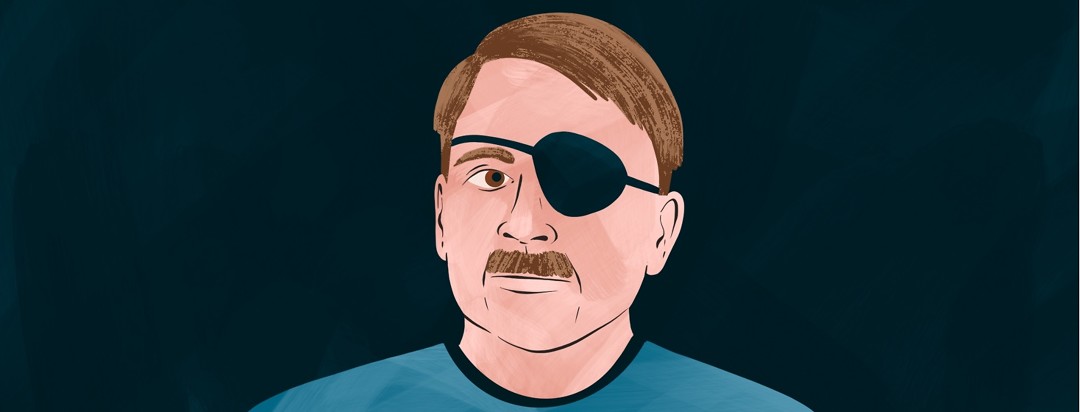Learning to Live With One Good Eye
Recently, a member of our site asked a question: “Can I wear a patch on my bad eye in order to see better?” This really got me thinking and researching this topic. My initial reaction was to reject the idea as unwise.
Recent progression to geographic atrophy
I have had AMD for 9 years, dry in 1 eye and wet in the other. More than 80 injections in my wet eye has it testing at 20/40. Paradoxically, my dry eye was 20/30 for most of these 9 years but has just recently gone into geographic atrophy (GA) and now tests at 20/300, legally blind. Bummer indeed!
Daily tasks require more effort now
I am legally blind in 1 eye and see 20/40 in my “good eye.” Little tasks that previously I would do on autopilot now require some extra effort on my part. Example: zipping up the zipper on my jacket. I find myself closing my bad eye (like when you wink), and by doing so, I find it easier to zip up my zipper. In essence, I’m using an eyelid as an eye patch.
There is help for vision loss
And guess what? There is help available to those of us who are in this pickle! Yep, it’s found under vision rehabilitation services, or perhaps low vision specialists. They are usually optometrists who are highly trained in matters of low vision — in my case, monocular vision.
Can an eye patch help?
So, back to that community member's question: Can using an eye patch be helpful?
I’m sort of afraid to try this, as I think the brain somehow compensates for differing vision in 1 eye. It makes me think I would become totally dependent on this practice. It is a significant idea, though, and one I will ask my vision rehab doc about.
Monocular vision adjustment takes time
Adults who lose their sight in 1 eye often have trouble with the ability to track moving objects, judge distances, and perceive depth. (They’re talking about me, here.) That means I will have to learn how to consciously use 1 eye and my other senses to gather information that used to come effortlessly with 2 eyes.
Visual training activities and rehabilitation
The autopilot no longer works automatically. This is where the professionals in vision rehab come in. Visual training activities help. Some examples:
- Reaching for and grasping certain objects. Both the speed and the accuracy of the grasp is negatively affected by the loss of binocular vision.
- Adults who lose vision in 1 eye have more collisions while walking, especially on the side where they lost the vision. That’s where sessions with an orientation and mobility specialist can help.
- Using "motion parallax." Many people with vision in only 1 eye struggle with depth perception and judging the distance of moving objects.1
- Learning new techniques to drive safely with vision in only 1 eye is often covered by the vision rehab specialist.
Visiting a low vision rehab center
There is help out there for those of us who are struggling. I have my first appointment with a low vision rehab center in about a month, and you can be assured I will report back to you on what I find. Wishing us all well on our shared eye health journey.
Editor's Note: As of August 2023, 2 drugs known as complement inhibitors — Syfovre® and Izervay™ — have been approved by the US Food and Drug Administration (FDA) to treat geographic atrophy (GA).

Join the conversation